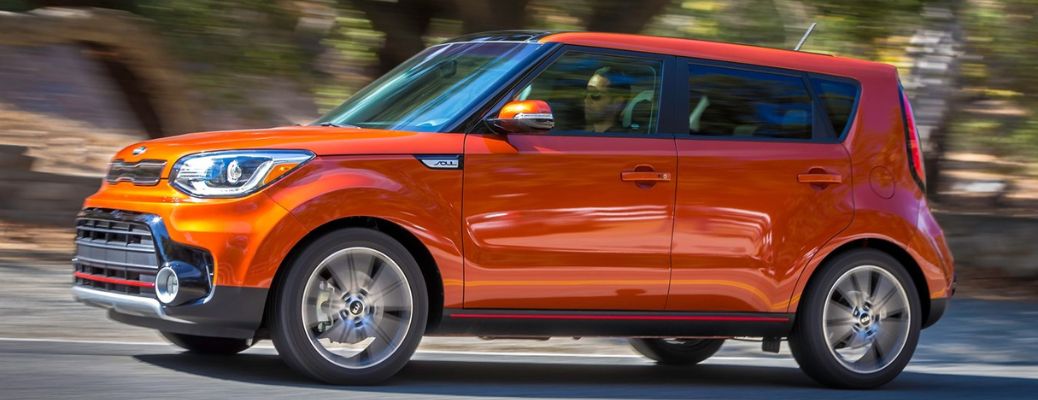When searching for a wheelchair accessible vehicle, there are several key factors to consider to ensure the vehicle suits your specific needs.
Accessibility is a top priority. Whether you require ramp access or lift access, it is important to evaluate the width and height of the entrance. The vehicle should also offer a spacious interior that can easily accommodate a wheelchair or mobility scooter.
Seating capacity is another vital consideration. You should determine how many passengers you need to accommodate, including wheelchair users, and look for a seating arrangement that can be adjusted to fit your needs.
This ensures that all passengers, including those in wheelchairs, can travel comfortably. The size of the interior is also critical.
Be sure the vehicle has enough headroom and aisle space to allow easy maneuvering of a wheelchair. A roomy interior can greatly enhance comfort and ease of movement.
Safety features are essential for every passenger’s protection. Seek out vehicles that are equipped with modern safety technologies such as airbags, anti-lock braking systems (ABS), and electronic stability control (ESC).
These features contribute to a safer travel experience. Comfort is especially important for longer trips. Evaluate the quality of the seating, climate control options, and available entertainment systems to ensure a more pleasant journey.
Finally, consider the vehicle’s maintenance needs. Think about fuel efficiency, repair costs, and general upkeep to determine whether the vehicle is economical in the long run.
By taking all of these factors into account, you can select a wheelchair accessible vehicle that fits your lifestyle and provides a safe, comfortable, and enjoyable way to travel.
Wheelchair accessible vehicles are specifically designed to offer safe and convenient transportation for individuals with mobility impairments. These vehicles come equipped with features like ramps or lifts to allow easy entry and exit, ensuring that wheelchair users can travel independently and with minimal assistance.
There are several types of wheelchair accessible vehicles, each offering unique advantages. Minivans are popular due to their spacious interiors, which can accommodate multiple passengers and provide ample room for wheelchairs.
They are often chosen by families or groups. Full-size vans offer even greater interior space and are commonly used for commercial transport.
These vehicles can carry more passengers and accommodate larger wheelchairs or mobility scooters. SUVs are preferred for their versatility and durability. With their higher ground clearance, they can handle a variety of terrains while still offering accessibility features.
Electric vehicles, which are becoming increasingly popular, provide the same accessibility as traditional vehicles but with the added benefit of being environmentally friendly due to reduced emissions.
Wheelchair accessible vehicles offer numerous benefits for their users. One major advantage is independence. These vehicles allow individuals with mobility impairments to travel without relying on others.
They are also designed for comfort, offering features such as adjustable seating and climate control to ensure a pleasant ride. Accessibility to public places like shopping centers and restaurants becomes much easier, improving the overall quality of life.
In addition, these vehicles promote social inclusion by enabling wheelchair users to participate in community events and maintain active social lives.
Understanding the different types and features of wheelchair accessible vehicles helps individuals make informed decisions when selecting a vehicle that best meets their needs.
Also Read: 10 Safe and Affordable Cars in 2025 That Earned IIHS Top Safety Pick Plus Ratings
Fiat Doblo
Among the most accessible cars, the Fiat Doblo stands out for its versatility. The Doblo range includes a high-roof model with a lowered-floor kit that can easily accommodate a passenger in a wheelchair.
Converting vehicles like the Fiat Doblo into wheelchair accessible vehicles (WAVs) presents both challenges and benefits, such as supply delays and the difficulties encountered by converters in adapting vehicles to accommodate large battery packs, but ultimately provides essential mobility solutions for disabled users.
The vehicle is equipped with modern safety features and sliding doors—an essential feature for WAVs. Its extended boot space is capable of storing additional seats, a walking aid, a scooter, or a collapsed wheelchair. There is also the option to install a rear-entry ramp and electronic hoists to improve accessibility.
The Fiat Doblo has traditionally been the least appreciated among the Stellantis group’s small vans, which seems somewhat unfair. The reason is simple: the Doblo is mechanically identical to the Citroën Berlingo Van, Peugeot Partner, and Vauxhall Combo Cargo.
These models share engines, gearboxes, equipment, and even body panels—yet while the others are well regarded, the Doblo often gets overlooked.
Despite being overshadowed by its Stellantis siblings, Fiat hasn’t abandoned the Doblo. It recently received a facelift to modernize its look, giving the front end a uniquely Italian design highlighted by the large “FIAT” text across the grille.
Along with a new bumper and other small exterior tweaks, the changes may be subtle, but they help keep the Doblo looking current. Inside, the changes are minimal.
You’ll need to opt for the top-tier Primo trim to benefit from most of the upgrades, such as a 10in infotainment screen. All versions, however, get a new squared-off steering wheel. It’s an update, but far from revolutionary.
The Doblo faces stiff competition from recently refreshed rivals like the Ford Transit Connect, Mercedes Citan, Nissan Townstar, Renault Kangoo, and VW Caddy Cargo.
With so many updates across the segment, the question is whether Fiat has done enough to elevate the Doblo’s standing.
Fresh styling outside, a modestly updated interior, and the inclusion of new safety technology have helped bring the Fiat Doblo up to date.
As with other Stellantis small vans, the practical differences between brands are minimal, so your choice should largely come down to pricing. If you can get a good deal on the Fiat version, rest assured you won’t be disappointed.
The Doblo boasts an agile chassis that delivers a reasonably car-like driving experience. It also leads its class in payload and cargo volumes for most variants. The trim levels are logically structured, offering either value or added comfort.
However, the short L1 versions only offer one sliding door, and the cabin’s widespread use of hard plastics gives it a somewhat cheap feel. The warranty is also limited to three years, which might be a drawback for some buyers.
On the road, the Doblo offers a pleasant driving experience. Its strengths include a car-based chassis that allows for confident handling, relatively refined and smooth engines, and an automatic gearbox that doesn’t compromise payload capacity.
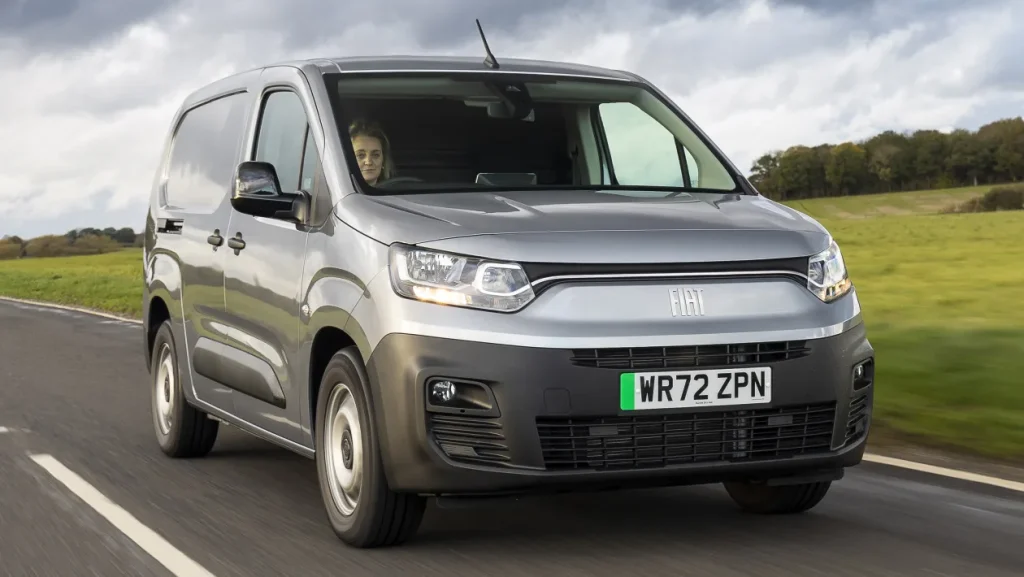
However, the manual gearbox can feel vague and uncooperative, and transmission choices are tied directly to engine options, limiting flexibility. Fiat hasn’t introduced any new powertrains with the Doblo’s refresh.
The van is available with a single 1.5-litre diesel engine, though offered in two outputs: 100bhp and 128bhp. Choosing the more powerful version also increases torque from 184lb/ft to 221lb/ft.
The lower-powered model comes with a six-speed manual gearbox that can be slightly awkward to use, while the more powerful option includes an eight-speed automatic—gearbox and engine choices cannot be interchanged.
In fact, driving the Doblo can be surprisingly enjoyable. It shares some underpinnings with the Vauxhall Astra, and with a few chassis tweaks, the Doblo feels refined, comfortable, and fairly engaging for a van of its size.
Still, the small van segment is evolving quickly. What was once best in class is now simply one of the better options. The newest versions of the Renault Kangoo, Mercedes Citan, and Nissan Townstar offer slight advantages, but the Doblo remains competitive. For those needing a bit more ruggedness, Fiat offers a Worksite package for entry-level models.
This version features a 30mm suspension lift, chunkier all-terrain tyres, added underbody protection, and enhanced traction control settings for mud, gravel, and similar terrain. It’s not a full 4×4, but it handles rougher worksites better than the standard van.
Inside, the Doblo remains largely unchanged and conservative in design. While Peugeot adds a bit of flair to its Partner model with a unique instrument panel and small steering wheel, the Doblo sticks with a more conventional layout.
Its interior is dominated by durable plastics—useful for longevity, though not always comfortable, especially on the door tops where many drivers might rest an elbow. Nevertheless, the cabin feels robust and fit for daily commercial use.
Trim options are simple. The entry-level version is a bare-bones workhorse suited to fleet buyers, while the Primo model caters to owner-drivers with extra features like a 10in touchscreen infotainment system that supports Android Auto and Apple CarPlay.
There’s also a 10in digital driver’s display that shows important information clearly and offers light customization.
Going for the base trim means foregoing both screens. Instead, it features traditional analogue gauges and a rugged phone mount in place of the infotainment system. Using Fiat’s dedicated smartphone app, drivers can connect to the van, track trips, monitor fuel usage, and log journey efficiency.
Volkswagen Caddy Life
The Volkswagen Caddy Life is another excellent option. The VW Caddy Maxi, also available in a standard version, is a five-seater vehicle that can transport a wheelchair or scooter passenger.
It has earned a strong reputation in the wheelchair accessible vehicle market thanks to its compact size and flexible design. With two sliding doors and a large rear door, passengers can enter from whichever side is most convenient.
As one of the more stylish WAVs, the accessible Volkswagen Caddy combines classic Volkswagen design with a non-slip, lowered floor that provides optimal access and safety.
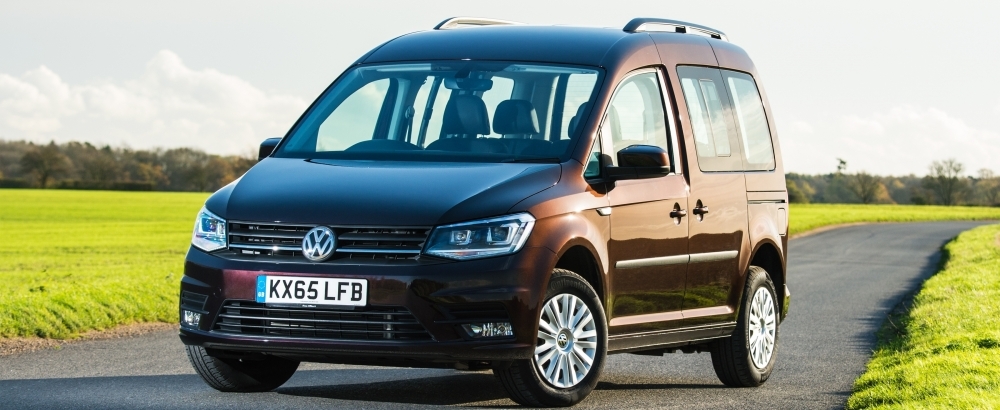
We’re all familiar with the popemobile used by the Pope – and in a similar spirit, the Volkswagen Caddy might just be the ideal transport for an episcopate of bishops.
The Caddy is a van-based MPV, and thanks to its tall, boxy shape, it offers an impressive amount of headroom inside.
This makes it spacious enough for five – or even seven – clergy members to travel comfortably together, fully robed in their ceremonial attire.
Volkswagen offers the Caddy in two different lengths. You can choose the standard wheelbase model, available with five or seven seats, or go for the extended wheelbase version, known as the Caddy Maxi, which comes with seven seats as standard.
The Caddy shares its foundation with the VW Caddy Cargo van and is available with either a petrol or diesel engine.
At this point, you might assume that since the Caddy is based on a van, it probably doesn’t offer much in terms of driving enjoyment—and that a more obviously car-inspired MPV would handle better.
However, what lies beneath the Caddy (and its Cargo counterpart) is a VW Golf – “and that’s not a car that’s ever been accused of being untidy on the road.”
Kia Sedona
The Kia Sedona, a seven-seater with a generously sized body, is easily converted into a WAV. It offers ample headroom and legroom, making it ideal for modification.
The best models for wheelchair access were manufactured between 2006 and 2012, and many have already been converted by specialist companies to provide rear or side entry.
Typically, three standard seats are removed to make room for a ramp. There is also the possibility for wheelchair passengers to sit alongside the driver, offering greater inclusion.
One of the most attractive qualities of the Kia Sedona is its relatively affordable pricing, which is especially appealing for families navigating the challenges of a strained economy. With the discontinuation of the L trim after 2019, the entry-level option now begins with the LX, which has a Manufacturer’s Suggested Retail Price (MSRP) of $30,400.
Moving up, the EX is priced from $33,700, while the range-topping SX starts at $41,500. Even at its highest trim level, the Sedona remains a solid value compared to competitors like the Odyssey Elite, which commands a significantly higher price of $47,820. These figures do not include tax, registration, or the $1,120 destination fee.
Kia truly succeeded with the driving dynamics and handling of the Sedona. The steering feels impressively responsive and precise, reacting quickly to inputs, which is a welcome trait when sudden maneuvering is required to avoid obstacles.
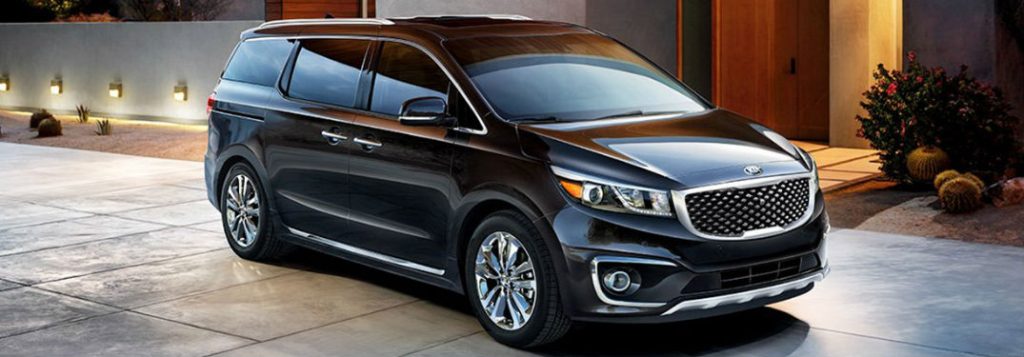
The ride quality is smooth and composed, which is a desirable trait for a vehicle primarily intended to transport families.
What stood out most was the Sedona’s behavior on twisty roads—it remained composed and stable even when pushed, and the SX trim, equipped with standard high-performance shocks, demonstrated an admirable level of capability.
On the highway, it delivers a cruising experience that feels both solid and predictable. Overall, we found ourselves pleasantly surprised by how competently this vehicle performs.
The minivan segment is a competitive space, with numerous offerings from some of the most established automakers in the industry, so standing out is no easy task. The 2021 Kia Sedona doesn’t introduce any groundbreaking changes, especially with a new version expected for 2022.
However, that doesn’t mean it should be dismissed. From an exterior design perspective, the Sedona stands apart, boasting sculpted styling that gives it more of an SUV-like presence than a traditional minivan look.
The interior, while functional and honest, won’t leave a lasting impression unless you opt for the premium SX model, which does deliver an upscale experience. That said, the Sedona falls short in terms of interior space and flexibility when compared to newer competitors.
The Chrysler Pacifica still leads the class, and the incoming Toyota Sienna is poised to surpass the Sedona as well. Driving dynamics remain a strong point for the Sedona, with adequate engine performance, and responsive steering and suspension.
However, newer rivals have simply advanced further. They deliver a more premium experience, come equipped with more modern technology and a wider range of safety features, and offer better fuel efficiency.
The Sedona is not a poor choice by any means, but in a market where minivans must go all out to compete with increasingly popular SUVs, it struggles to stay relevant.
Also Read: 10 SUVs Where Third-Row Access Isn’t a Struggle and Adults Can Actually Sit Comfortably
Seat Alhambra
Another notable option is the Seat Alhambra. This award-winning vehicle in 2015 due to its practical features, such as optional electric sliding doors, two wheelchair seating positions, generous headroom, and a lightweight TorSpring ramp.
The Alhambra comes standard with three seats in the second row, and the middle seat can be removed to allow a wheelchair user to sit closer to other passengers. This configuration provides a more inclusive travel experience compared to many other Multi-Person Vehicles (MPVs).
By exploring these options and understanding what each vehicle offers, individuals with mobility needs can make better-informed choices and find the right vehicle to support their independence and daily living.
The Alhambra’s most distinctive feature is its uncanny quietness at low speeds, combined with a ride quality that rivals that of a luxury limousine.

When you factor in its concert-hall-like interior space, it becomes the kind of vehicle that, if not for the large ‘S’ badge on the front, would be perfectly suited for chauffeuring celebrities.
Its considerable width does make parking a bit of a challenge, particularly for those without a Blue Badge, but that minor inconvenience is easily justified by the sheer amount of practical space it offers. And with the inclusion of parking sensors, the issue is hardly worth stressing over.
As expected, Volkswagen’s ergonomics experts have done an excellent job ensuring that nearly anyone can find a comfortable driving position.
Despite its substantial, boxy form, the Alhambra handles reasonably well, although it clearly feels more at home cruising steadily in a straight line.
Because of this, we’d recommend opting for the DSG gearbox. The latest version has become far more intuitive, shifting gears more smoothly and with better timing than earlier iterations, making for a much more refined driving experience.
Renault Kangoo with ramp access
Renowned as one of the UK’s leading compact WAVs, the Renault Kangoo stands out for its generous headroom and lowered floor, offering effective wheelchair and mobility scooter access for both passengers and drivers.
Depending on the model, it can feature between two and five seats. The rear twin seats can be folded forward to provide access through a foldable ramp, lift, or a specially designed winch locking mechanism.
The Kangoo may be relatively compact, but it still offers flexibility with the availability of both medium and long wheelbase versions, along with a long-wheelbase crew van option.
While there’s only a single roof height across the range, buyers can choose from three engine options: a 1.5-litre diesel available in two power outputs, and a 1.3-litre petrol engine.
The petrol option might be the ideal pick for those carrying lighter loads and looking to reduce initial purchase costs. Petrol-powered vans are especially suited to shorter trips, making them a practical choice for urban use.
The standard diesel engine is the most fuel-efficient of the lot, although the higher-powered diesel version, which comes with an automatic gearbox, offers greater comfort on longer drives by easing the strain of shifting.
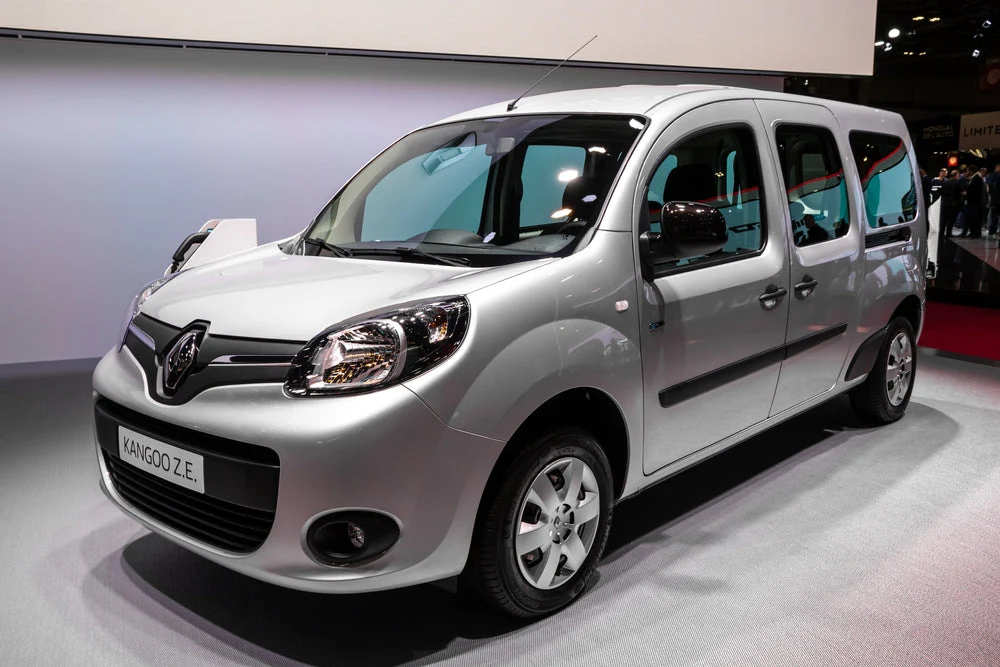
An impressive electric version, the Kangoo E-Tech, is also available and will be reviewed separately. The Kangoo is available in two main trim levels: Advance and Extra, with the more basic ‘Start’ model no longer offered in the UK.
This means all current Kangoo models come equipped with a generous list of standard features, including air-conditioning, smart wheel covers, cruise control, twin sliding side doors, and a touchscreen infotainment system that supports smartphone connectivity.
Upgrading to the Extra trim level adds even more, such as keyless entry, climate control, LED headlights, a 360-degree parking camera system, and body-coloured bumpers and mirrors, giving the van a more refined and stylish appearance.
Optional extras include items like a wireless smartphone charger, further enhancing the feeling that the Kangoo shares many characteristics with Renault’s passenger vehicles.
However, the Kangoo does lose some ground to its rivals when it comes to the load area.
Although the overall load length and width are similar to those of competitors like the Citroën Berlingo, the UK version of the Kangoo misses out on a particularly useful feature available in left-hand drive markets: a pivoting bulkhead.
This innovative addition helps extend the load area significantly, but its absence in UK models means the Kangoo can’t match the Berlingo’s clever Extenso cab, which allows for the transport of items up to 3.4 metres in length.
The Kangoo does include a practical internal roof rack that enables ladders to be stored just above the passenger’s head. While handy, this feature isn’t quite as versatile as the extended cab solutions offered by some competitors.
VW Shuttle Centro
Compatible with Caravelle, Transporter Shuttle, and T5 models, the Shuttle Centro conversion features wheelchair accessibility via a lightweight, low-gradient ramp.
This configuration allows space for up to two wheelchair users while still accommodating other seated passengers.
On a short wheelbase, it supports four seats plus one wheelchair, while the longer wheelbase version accommodates six seats and two wheelchairs. A key feature is that the wheelchair user can sit in the second row alongside others, rather than behind them.
This Volkswagen lowered floor rear passenger solution is offered in a choice of Transporter Shuttle S or SE models, available in both long and short wheelbases.
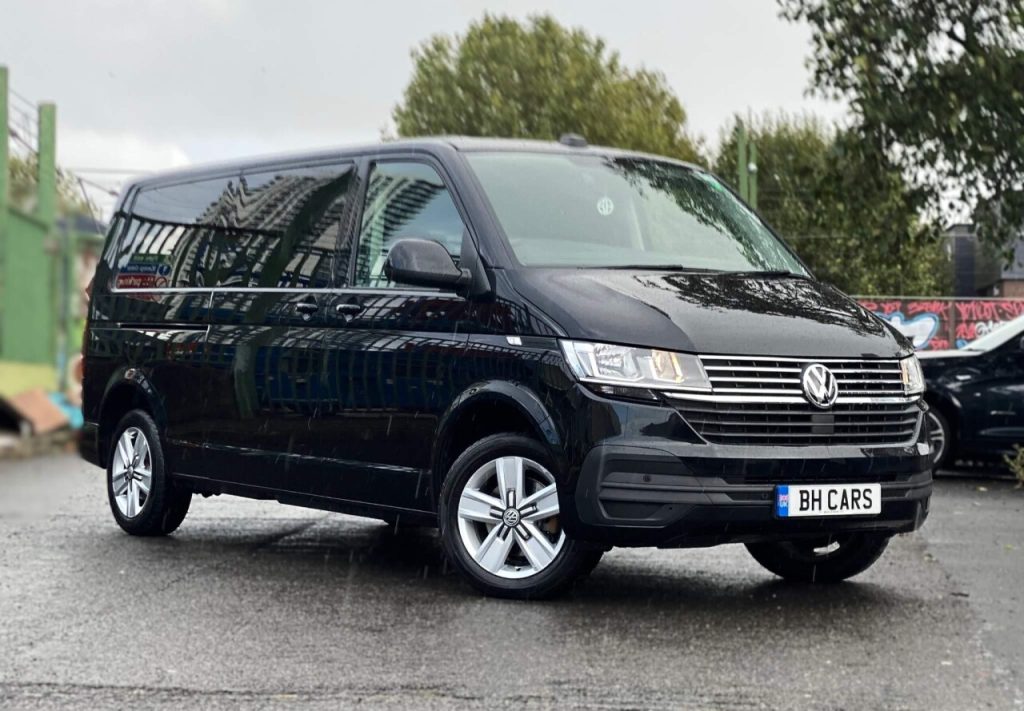
The SE models come equipped with the Light & Vision pack as standard, providing additional features for a more enhanced experience. The Centro conversion is designed to accommodate up to two wheelchair positions on long wheelbase versions and offers a total of seven seats.
Wheelchair users can enter the vehicle through a lightweight, low-angle ramp that leads to a lowered floor. This design ensures excellent forward and side visibility and offers a generous 1470mm (59 inches) of internal headroom.
Additionally, the wheelchair user is positioned between other rear passengers, allowing for greater interaction and comfort during the ride.
Kia Soul
The Kia Soul is a stylish, compact WAV that comfortably seats up to four passengers using three standard seats in addition to a wheelchair.
It includes an electric-powered rear door and a closing ramp for wheelchair access, enhanced by a remote opening system and an electric docking mechanism with secure restraints.
The door height measures an impressive 55 inches, making it suitable for taller wheelchairs. An optional headliner conversion is available for those needing additional headroom.
Peugeot Partner Tepee
The Peugeot Partner Tepee remains the UK’s top-selling WAV, offering five seats by default and the flexibility to be configured as required.
It enables a rear passenger to sit next to a wheelchair user, and features an EasyGlide ramp that can be folded flat into the vehicle floor when not needed.
Wheelchairs are secured using a four-point restraint system and diagonal seat belts, ensuring both safety and reassurance during travel.

As the name suggests, the Peugeot Partner Tepee is derived from the Partner van. However, while the standard compact van has seen significant success, the five- or seven-seat Tepee MPV version has not garnered quite the same level of popularity.
Its van-like appearance may not appeal to everyone, but the spacious interior and fuel-efficient diesel engines are hard to beat.
The 2015 update brought some enhancements, including LED daytime running lights, redesigned bumpers, and a refreshed grille. Inside, all models now come with cruise control, air conditioning, and a height-adjustable driver’s seat.
Available in just two trims—Active and Allure—the higher-spec models come equipped with more luxurious features such as 16-inch alloy wheels, DAB radio, and a MirrorLink infotainment system. However, be cautious, as opting for a more powerful diesel engine can push the price up to nearly £20,000.
At this price point, you might consider one of the Tepee’s more car-like competitors, such as the Citroën C4 Picasso, Ford C-MAX, or Volkswagen Touran. Alternatively, you might want to explore larger options like the SEAT Alhambra or Ford S-MAX.
While the Partner is undeniably versatile, with removable rear seats, it falls short of its rivals in terms of interior quality and driving experience.
The Tepee offers a choice of one petrol engine and three diesel engines. However, the entry-level 74bhp petrol engine may feel underpowered for a vehicle of this size.
The more powerful and economical BlueHDi diesel engines are a much better option, with the most fuel-efficient 98bhp version capable of delivering 68.9mpg.
Vauxhall Zafira
Equipped with a lowered floor and available conversion options, the wheelchair-accessible Vauxhall Zafira accommodates four passengers plus one wheelchair user in comfort.
Buyers are encouraged to consider earlier versions of this model, as recent updates have made newer models more challenging to adapt.
It includes a fold-out ramp that facilitates easy access for wheelchairs and larger mobility scooters. Additional features include a 53-inch internal headroom, lowered floor, and four-point wheelchair restraint system.
The Zafira Tourer underwent a mild facelift in mid-2016, which included updated front styling to align with the new Astra, as well as an interior refresh that incorporated more advanced technology.
Inside, the revised Zafira offers a significant improvement over its predecessor, featuring simplified controls and soft-touch materials that enhance the overall feel.
The centerpiece is an eight-inch touchscreen, with Vauxhall’s OnStar system as standard, and the option to add Apple CarPlay and Android Auto. The Zafira’s versatile seating arrangement also adds to its practicality, providing multiple ways to adjust the rear seats to maximize either passenger or luggage space.
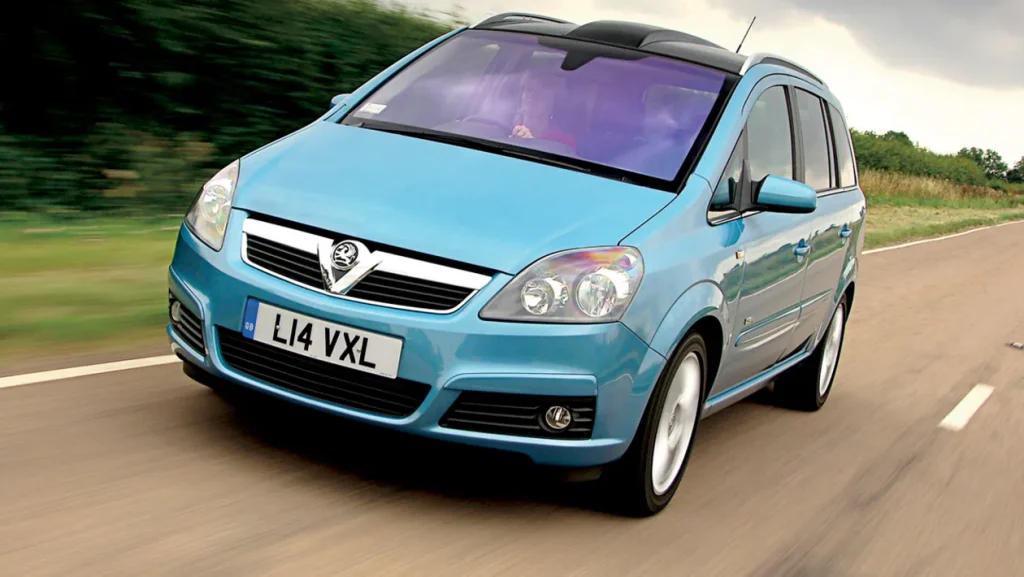
After a brief drive, you’d be impressed by the Zafira Tourer’s lively steering, minimal body roll, and solid grip. It proves to be more enjoyable to drive than many other MPVs.
The optional adaptive dampers, branded as ‘FlexRide’ by Vauxhall, continuously adjust the chassis based on the driving situation or the driver’s preferences, all accessible through selectable driving modes.
The Zafira Tourer was the first Vauxhall to feature the new aluminum 1.6-litre Whisper diesel engine, which quickly became the quietest and most fuel-efficient option in the lineup.
The 2.0-litre diesel engine, though more industrial in feel, offers greater pulling power, making it a better choice if you often carry five passengers or heavy loads.
Trim levels are well-equipped, with all models featuring air conditioning, cruise control, DAB digital radio, and a multi-functional steering wheel. However, the top-spec models can be quite expensive.
Mercedes-Benz V-Class
Designed with family travel in mind, the Mercedes-Benz V-Class WAV features a centrally positioned wheelchair space and a lowered floor that promotes inclusive travel alongside other passengers.
In comparison to the Ford Tourneo Connect, the V-Class boasts a more premium interior and enhanced safety technologies.
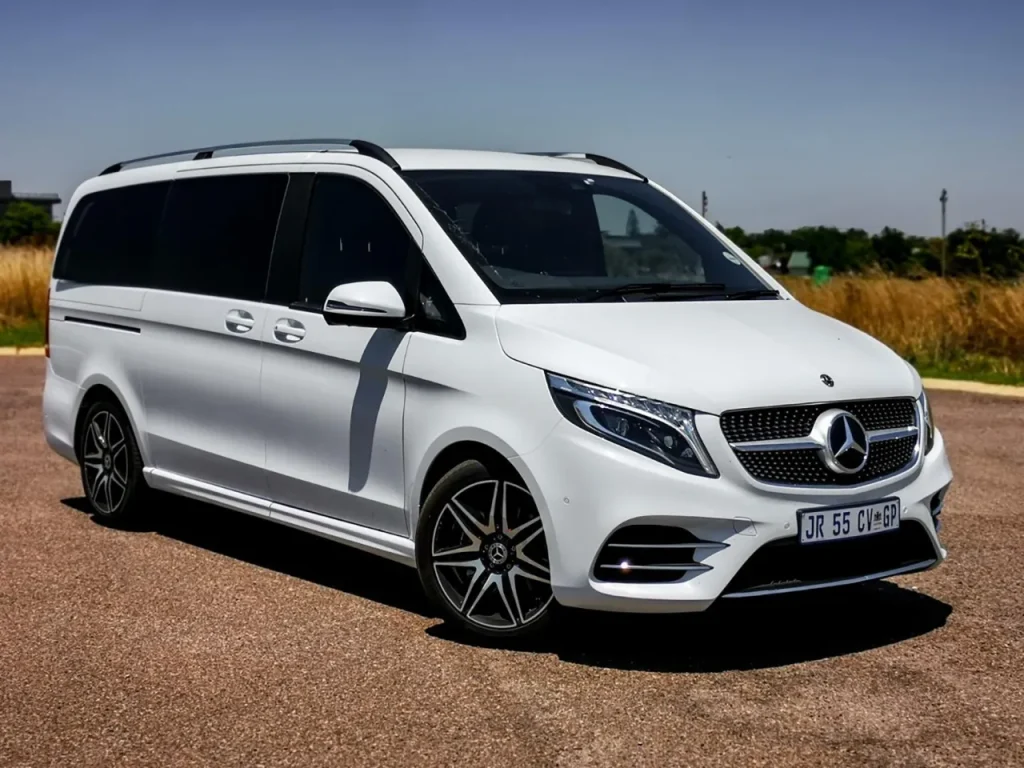
While the Tourneo Connect is noted for its compactness and flexibility with larger groups, the V-Class prioritizes comfort and convenience.
It includes power-assisted restraints that adjust automatically to road conditions and a fully automated access ramp that can be remotely controlled, with a flat and level floor ensuring a stable ride.

